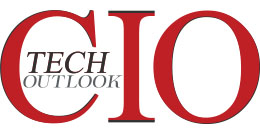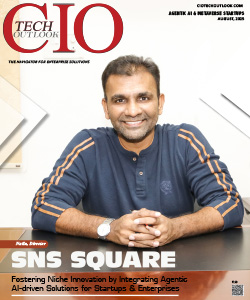Reimagining Manufacturing: How IoT, AI, and Edge Are Powering India's Industrial Revolution
Praveen Arora, VP-IOT, Tata Communications
 In an engaging conversation with CIOTechOutlook, Praveen Arora, VP-IOT, Tata Communications, shared his views on how the integration of IoT, Industry 4.0, AI, and edge computing is changing the manufacturing and supply chain landscape. He highlighted the role of IoT in manufacturing, the challenges posed by legacy infrastructure, and ways to encourage IoT adoption in the industry. Arora talked about connected worker solutions which enhance worker safety, productivity, and improve wellbeing, and the possibilities for IoT in India's emerging industrial environment.
In an engaging conversation with CIOTechOutlook, Praveen Arora, VP-IOT, Tata Communications, shared his views on how the integration of IoT, Industry 4.0, AI, and edge computing is changing the manufacturing and supply chain landscape. He highlighted the role of IoT in manufacturing, the challenges posed by legacy infrastructure, and ways to encourage IoT adoption in the industry. Arora talked about connected worker solutions which enhance worker safety, productivity, and improve wellbeing, and the possibilities for IoT in India's emerging industrial environment.
How is the convergence of IoT, Industry 4.0, AI, and edge computing reshaping manufacturing, and supply chains?
The integration of IoT, Industry 4.0, AI, and edge computing enables intelligent manufacturing environments, where decision-making can occur closer to the source of data, enabling quicker and efficient operational responses. These insights help industries build a predictive and forecast-based model to run manufacturing facilities more effectively. AI-driven analytics are shifting operations from reactive to predictive. This includes predictive maintenance, quality control, demand forecasting, reduced downtime and resource optimisation across the manufacturing environment.
Edge computing enhances use-cases by bringing solutions closer to the manufacturing plants, thereby minimizing latency, bandwidth constraints, and enabling real-time decision-making. This process ensures quicker responses to operational situations.
With initiatives such as ‘Make in India’ gaining traction, what role is IoT playing in accelerating manufacturing transformation?
The manufacturing sector is experiencing tremendous growth in India, particularly in electronics, automotive, and industrial equipment. The strategic deployment of greenfield IoT technologies during the initial stages of facility development offers a competitive advantage for rapid manufacturing scale-up. One advantage of deploying these technologies appears in the plant design phase, where the plant is effectively designed and integrated from the beginning. In comparison, to post-facto situations such as reinforcing an existing plant, the pathways are complicated owing to legacy limitations and integration points. In the case of existing brownfield facilities, IoT optimises the effectiveness of the existing plants, thereby reducing cost, increasing operational efficiency, and aligning with the ‘Make in India’ initiative.
With the aid of Predictive Analytics and AI for maintenance work, unplanned downtime can be reduced by up to 45%, which improves overall equipment effectiveness. Through the ‘Make in India ‘initiative, both brownfield and greenfield projects are growing with the help of IoT solutions. These solutions are not just about sensors and devices – they include a complete system made up of network platforms, connected devices, and the data they collect. This data is processed at the application layer to create useful insights. These insights are created to run value driven cases, which focus on improving quality, reducing costs, and making operations more efficient.
Many enterprises struggle with legacy infrastructure when integrating IoT solutions. How can they navigate this transition effectively?
A significant setup is implemented using wireless-based technologies, such as LPWAN (Low Power Wide Area Network). Equipment, machinery, and the workforce are connected through LPWAN networks. The operations are managed using simple and multi-sensor devices. These devices capture inputs from equipment, human interfaces, and various other environmental parameters by sensing and relaying relevant data. The data is transformed into a centralised dashboard, providing real-time visibility on various aspects of plant operations. For instance, it enables monitoring of productivity on a specific line or operation, the number of workers present, environmental parameters, and the safety status of the workforce. These elements are seamlessly integrated through the IoT fabric into a simple dashboard to deliver meaningful insights that contribute to overall plant efficiency.
This system enables seamless control and monitoring across different plants or within various lines and stations in the same facility. The data collected from sensors helps operators effectively manage productivity and maintain control over throughput levels. Additionally, many of these sensors are deployed according to the 'man, material, and machine' framework. Each component is interconnected, creating a unified system that fundamentally enhances efficiency in existing facilities.
Which industries are leading IoT adoption in 2025 and what makes them well-positioned for this transformation? Could you please share some real-life examples?
Different industries such as manufacturing, healthcare, automotive, energy and utilities, and retail are leading the adoption of IoT. Manufacturing continues to rapidly adopt predictive maintenance, quality control, supply chain optimisation, and integrating sensors into their digital processes. The data from the sensors or visual analytics is run through an AI-driven predictive analytics engine to reduce equipment downtime or to identify failures and errors in the quality control process.
For instance, the electronics industry, when printed circuit boards (PCBs) which contain multiple mounted components are being manufactured, visual analytics use high-speed, high-resolution cameras to take images of a PCB and compare them to a benchmark, or reference image. This way, the image can successfully identify defects such as incorrect component placement, a soldering issue, or wrong components placement. If a defect is found, the system automatically sends feedback to the equipment to control that particular output.
In the healthcare sector, several hospitals are utilising IoT devices to monitor patients via small, wearable, portable devices that monitor heart rate, blood pressure, blood sugar, ECG, and other vital stats. These wearable devices have many advantages as they continuously monitor patients, as well as identify anomalies quicker. Healthcare IoT devices can be used for patient monitoring as well as asset tracking in healthcare facilities, including guidance in facility management.
Emerging technologies are being used in the energy and utilities sector as well for smart grid management, predictive maintenance of equipment, and optimising energy distribution. The retail sector is also utilising visual analytics to optimise inventory management, study consumer behaviour, conduct personalised marketing, enhance customer experience.
Connected worker solution is a growing focus area. How does it enhance workforce productivity and safety?
Connected worker solutions connect frontline workers to digital systems that provide real-time information with clear instructions. Typical characteristics of connected worker solutions include augmented reality work instructions, remote assistance, and wearable safety monitors, which enhance safety and increase operational effectiveness. For instance, if the wearable is a band or can be worn on the body, then a range of health-related measures can be obtained. Additionally, augmented reality (AR) is being utilised as a navigational tool tied to the intricate processes associated with either manufacturing or MRO (Maintenance, Repair, and Overhaul). These solutions can result in productivity improvements of around 20%, while providing better accuracy and simplifying tasks.
What are the biggest opportunities for IoT in India? How do you see it contributing to manufacturing?
Thanks to Industry 4.0 developments and the continuous advancement of IoT capabilities, India is emerging as the entrepreneurial leader in technology innovation in the manufacturing sector. The country has taken advantage of its solid IT services and evolving manufacturing base, which enables India to become a destination for global IoT-based solutions. These developments are primarily categorised according to three significant parameters: safety, security, and sustainability.
Data integration across man, material, and machine interfaces is essential. This is critical for driving additional productivity within an organisation and providing customised solutions for complex manufacturing environments. India’s vast domestic market consumption and government initiatives such as the Production-Linked Incentive (PLI) schemes continue to make it a preferred destination for global manufacturing investments.




